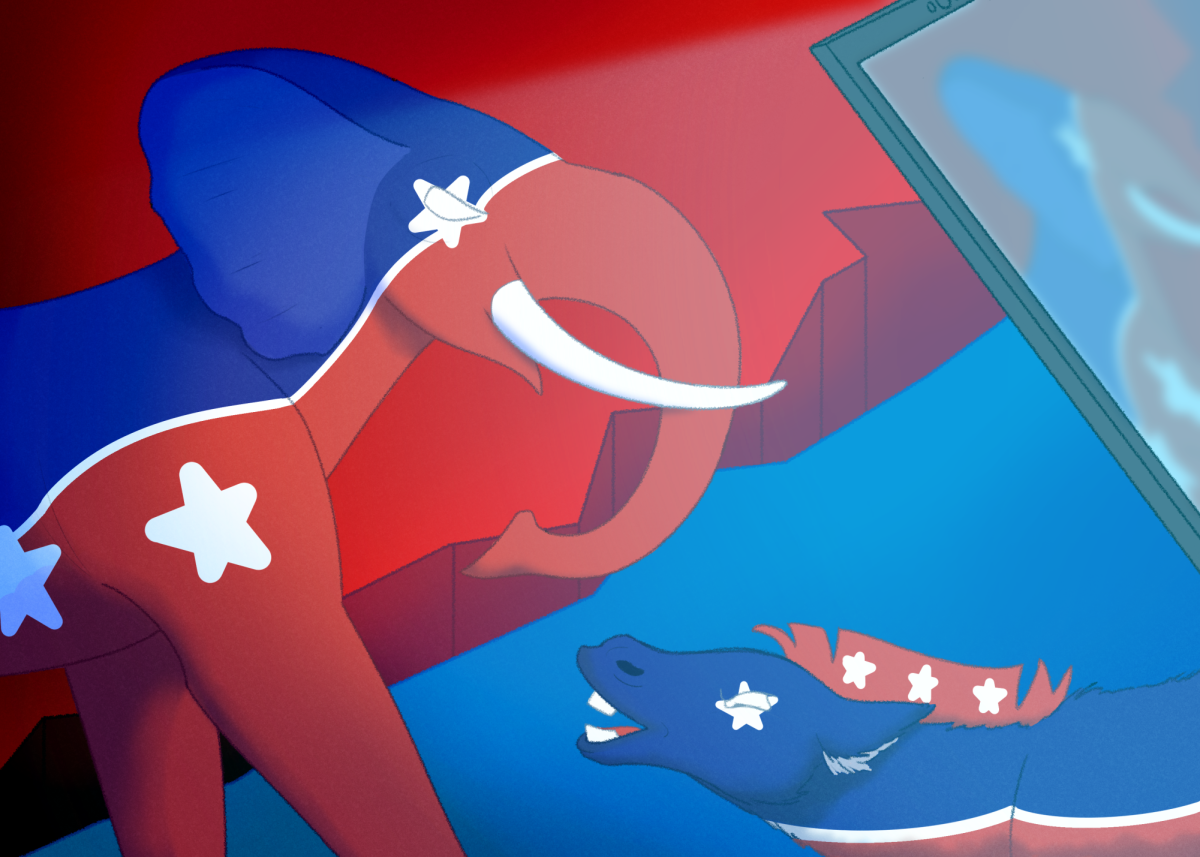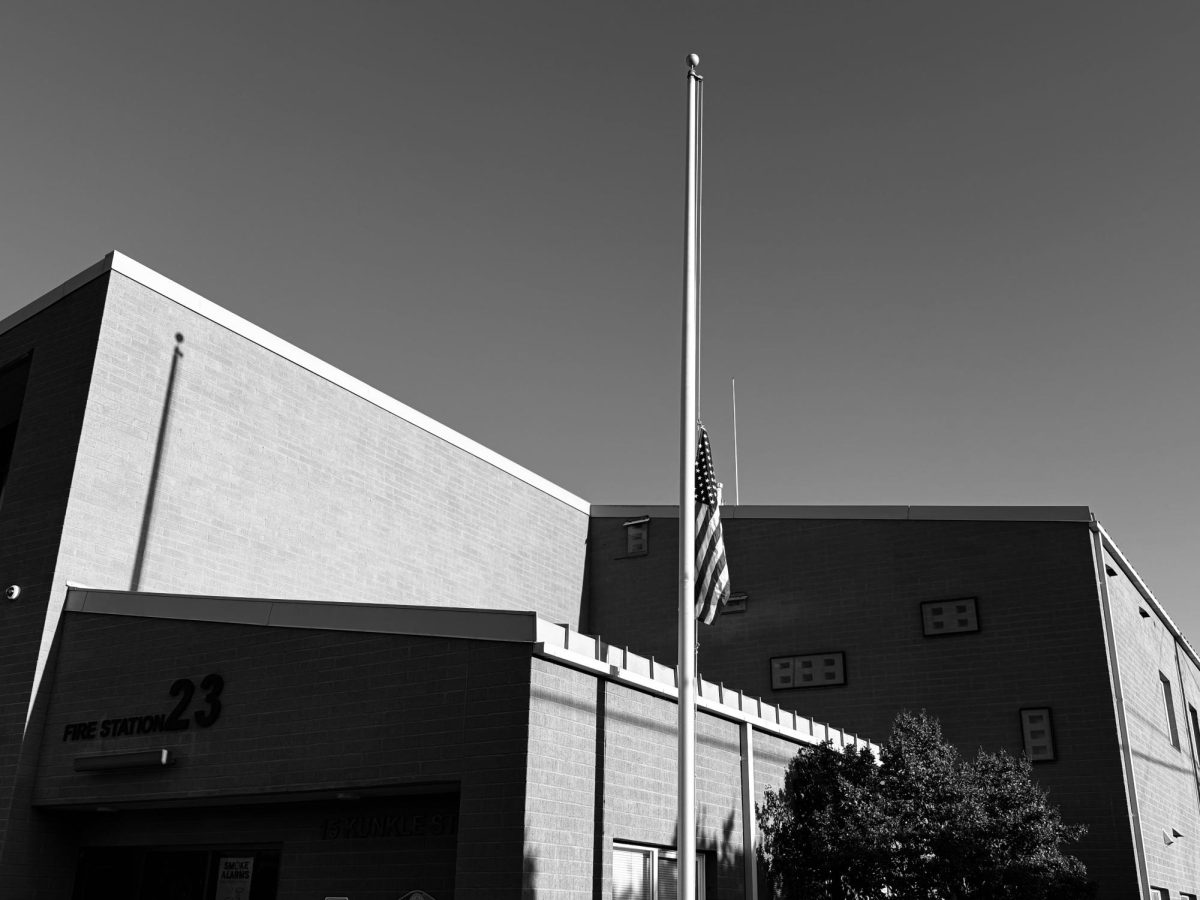Polarization is a complicated concept. While divide and skepticism are both natural and necessary in a democracy, there has recently been an increase in extreme polarization across the United States, especially in the American political landscape.
The appearance of extremities can partly be credited to the media. Many of us allow algorithms to manipulate us, causing us to only see opinions and facts that we want to see. Furthermore, we watch pools of stagnant knowledge collect across the internet as people unknowingly wallow in their depths.
First, let’s take a look at why it’s important to recognize that we are becoming polarized.
In Ezra Klein’s 2020 book “Why We’re Polarized,” he argued that differences between the two political parties in the United States have become exacerbated and that many people’s social identities have become increasingly intertwined with their political stance.
However, Brookings stated in an article that “the extreme polarization we are now witnessing, especially on the political right, has consequences that threaten to undermine democracy itself. These include declining trust in institutions; scorn for facts; legislative dysfunction; erosion of democratic norms; and, in the worst case, real-world violence.”
So how does the media have the potential to create polarized groups? One prominent example is age-old news sources such as cable news and journalism.
A Boston University global affairs organization brought up the concept of “identity journalism,” similar to Klein’s claim on how involved personal identities have become in politics. The organization explained, “Partisans tend to view each other negatively because polarized media weaponizes the differences between political and social groups instead of emphasizing commonalities.”
One example of this is a statement by Tucker Carlson, a host on FOX News. He stated, “The leaders of today’s Democratic Party … despise this country. They have said so. They continue to. That is shocking but it is also disqualifying. We cannot let them run this nation because they hate it. Imagine what they would do to it.” By carefully using words that clearly present a “them” and “us,” Carlson unified people under a pretense of fear against the “other” party.
Further evidence of social division based upon news sources is Pew Research Center’s 2020 study on how “deep partisan divisions exist in the news sources Americans trust, distrust and rely on.” For example, the report, conducted by four researchers, stated that “About two-thirds of liberal Democrats (66 percent) trust The New York Times … In comparison, just 10 percent of conservative Republicans trust the Times, while 50 percent outright distrust it.”
Aside from the influence of cable news and journalism, there is also social media.
One article published in October 2020 by the journal, Science affirmed how “In recent years, social media companies like Facebook and Twitter have played an influential role in political discourse, intensifying political sectarianism.”
Furthermore, a study conducted by the American Economic Association (AEA) found that participants who stayed off the social media platform Facebook for a month “significantly reduced polarization of views on policy issues.”
Phenomena such as these can be attributed to echo chambers and filter bubbles.
Echo chambers are essentially online environments where a user only comes in contact with content that reflects and reinforces their own knowledge and opinions. An echo chamber will be likely to only give one point of view on a topic, provide partial or no evidence, and ignore opposing opinions. They function based on confirmation bias, which is the tendency to prefer information that strengthens prior beliefs.
An April 2023 study by the National Library of Medicine (NLM) listed the following as the three main features that make social media the perfect environment for echo chambers: “no geographical restrictions, no social cost to sharing fringe beliefs and fellow believers can be found no matter how fringe.”
On the other hand, filter bubbles or biases occur when search engines implement algorithms to tailor results to a user’s past online activity, providing more information that reinforces initial beliefs.
The online literacy platform GCF Global explained how “These algorithms give you content based on what they think you like, and they will continue to do so until they’re mainly showing you content you’ll likely consume.”
However, an article by NYU Stern School of Business clarified that social media platforms are not maliciously installing divide online. They stated, “Social media companies do not seek to boost user engagement because they want to intensify polarization. They do so because the amount of time users spend on a platform liking, sharing and retweeting is also the amount of time they spend looking at the paid advertising that makes the major platforms so lucrative.”
Many of these companies have agreed on countless accounts to police themselves and filter out provocative content that adds fuel to the fire. However, although it would be an ideal situation if these companies consistently and honestly regulated themselves, oftentimes the level of regulation is not sufficient.
It is obvious that the divide within the U.S. is growing out of control, and the government must intervene and begin introducing new bills that would provide requirements for terms-of-service agreements with users, as well as stricter moderation.
We must also take action on a personal level. To ensure that the extreme polarization of Americans can be cooled, individuals must take responsibility. Establish a habit of always checking multiple sources to ensure correct, unbiased information. Be open to interactions with people of different perspectives.
Lastly, remember that your opinion is not so important that it holds priority over facts.















